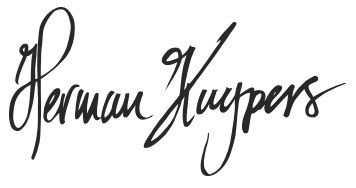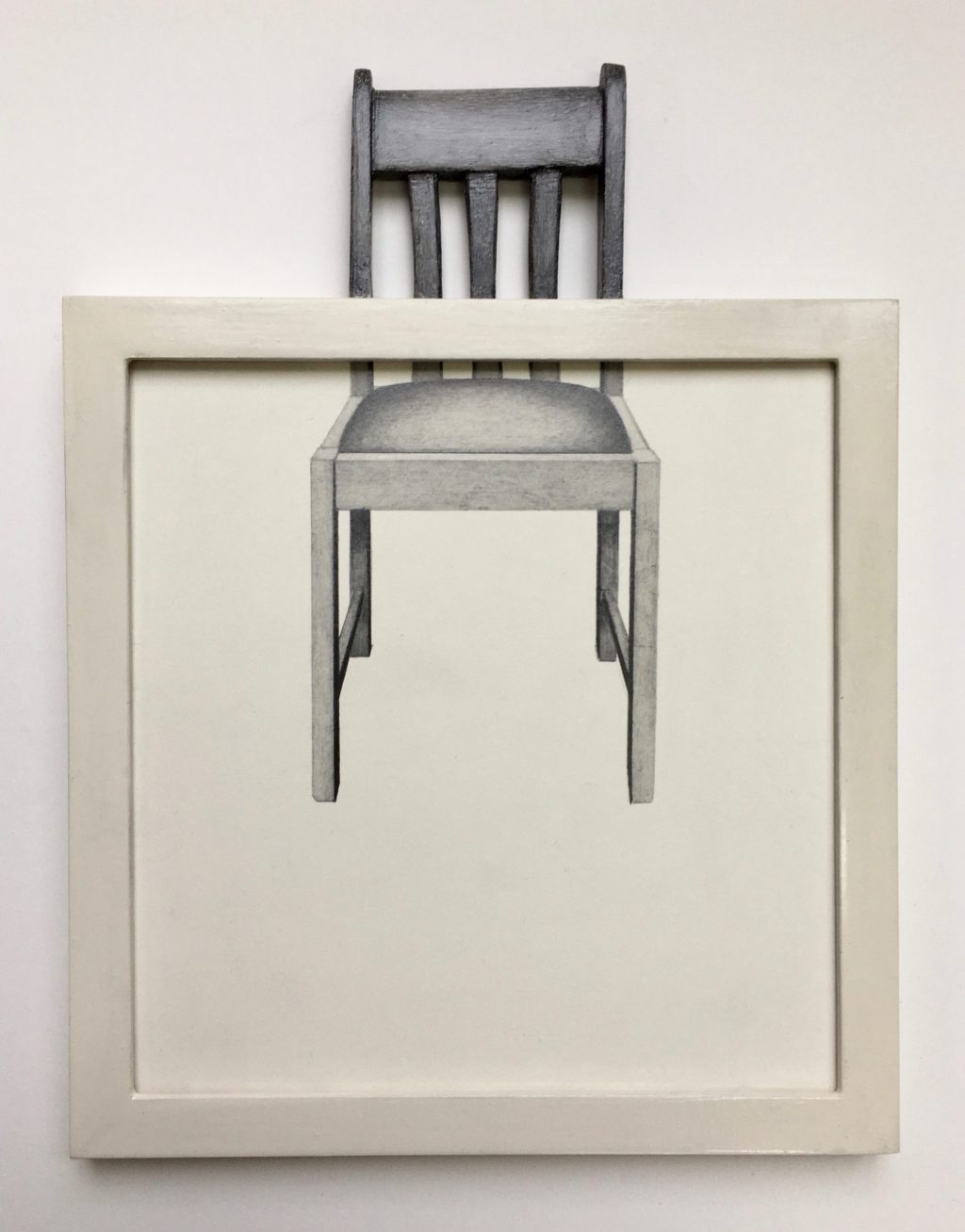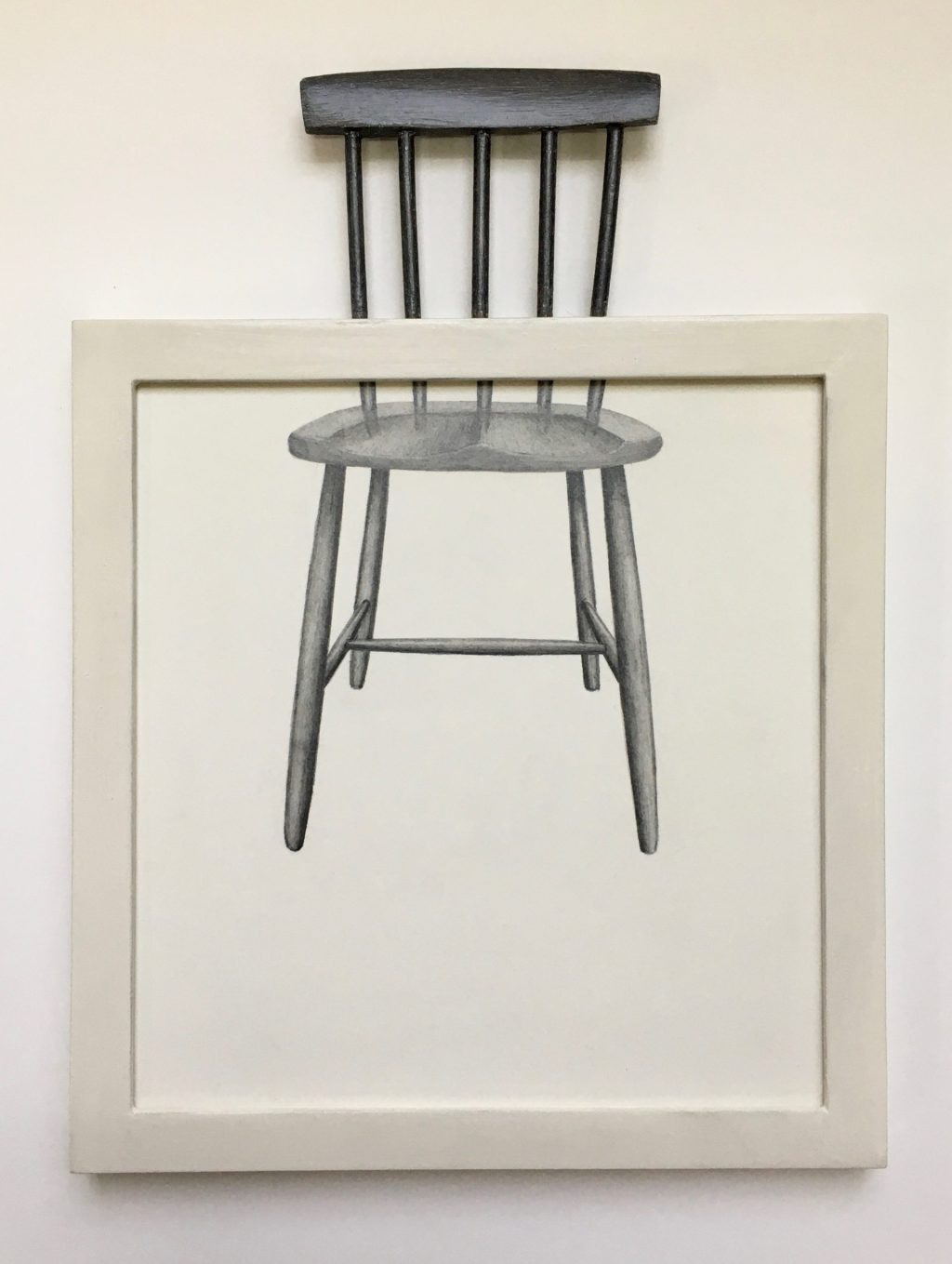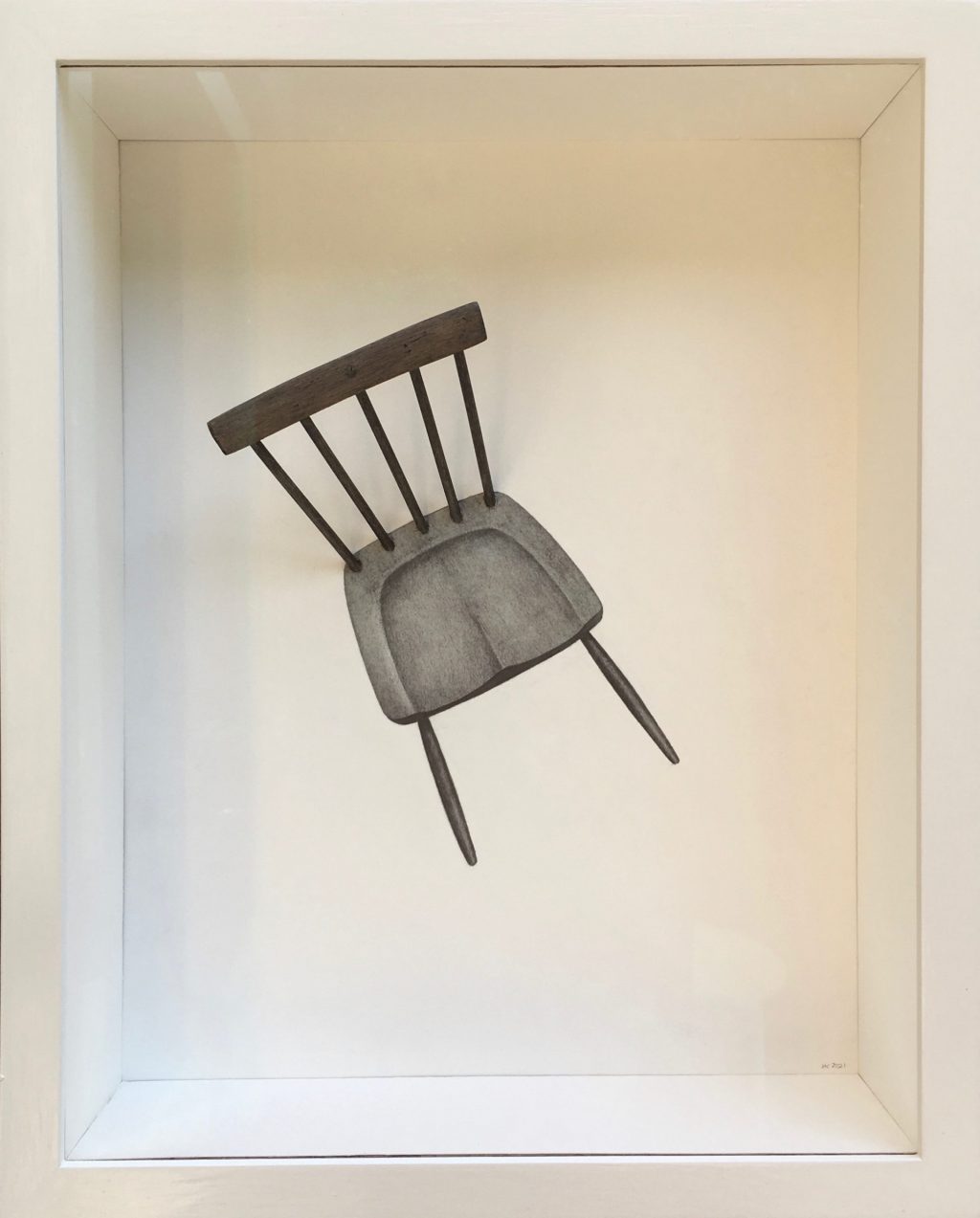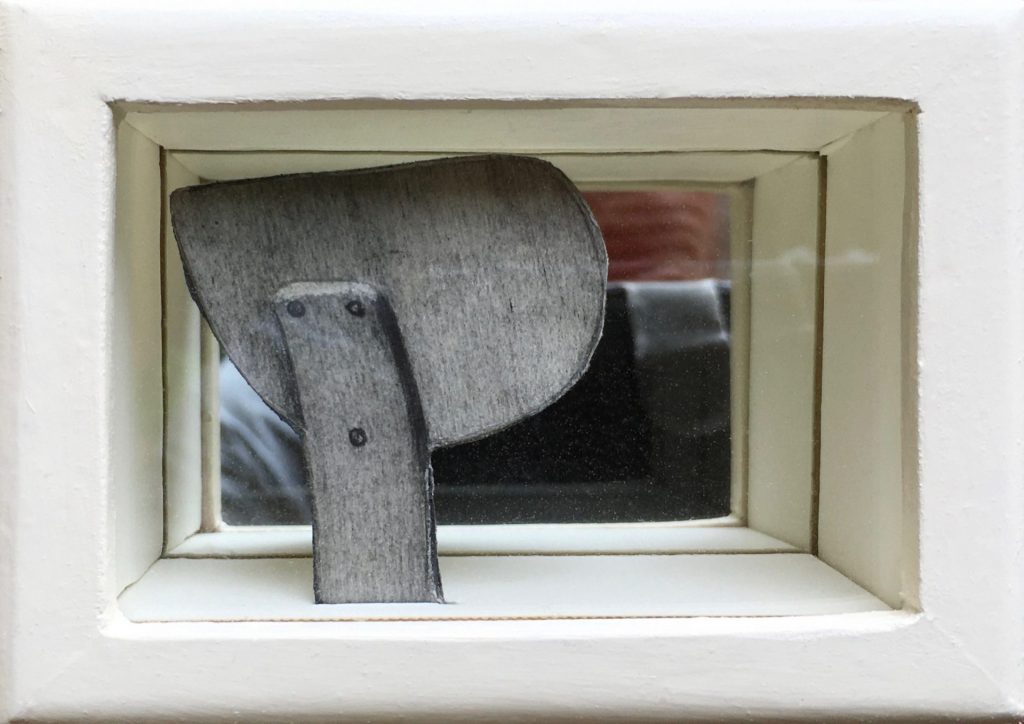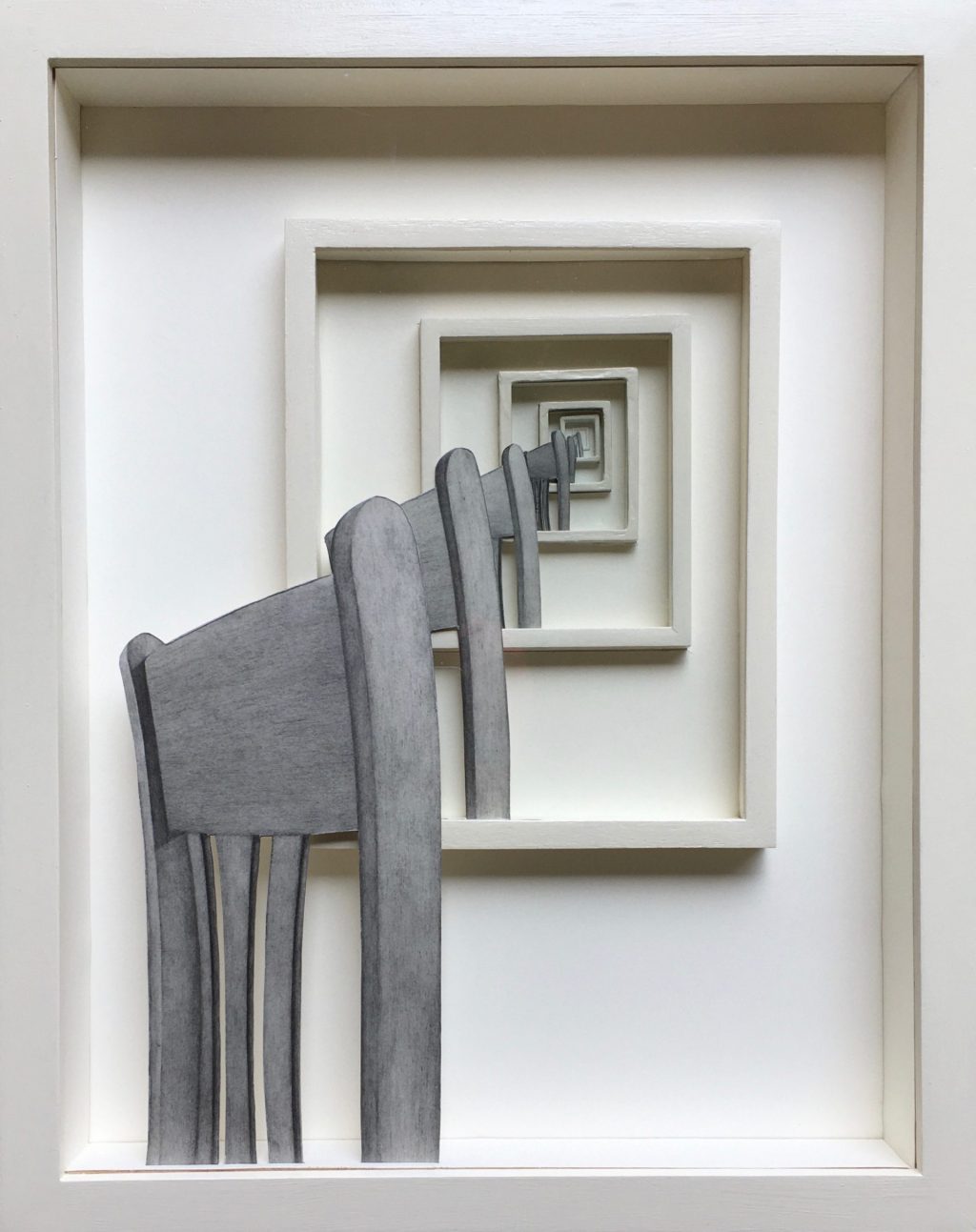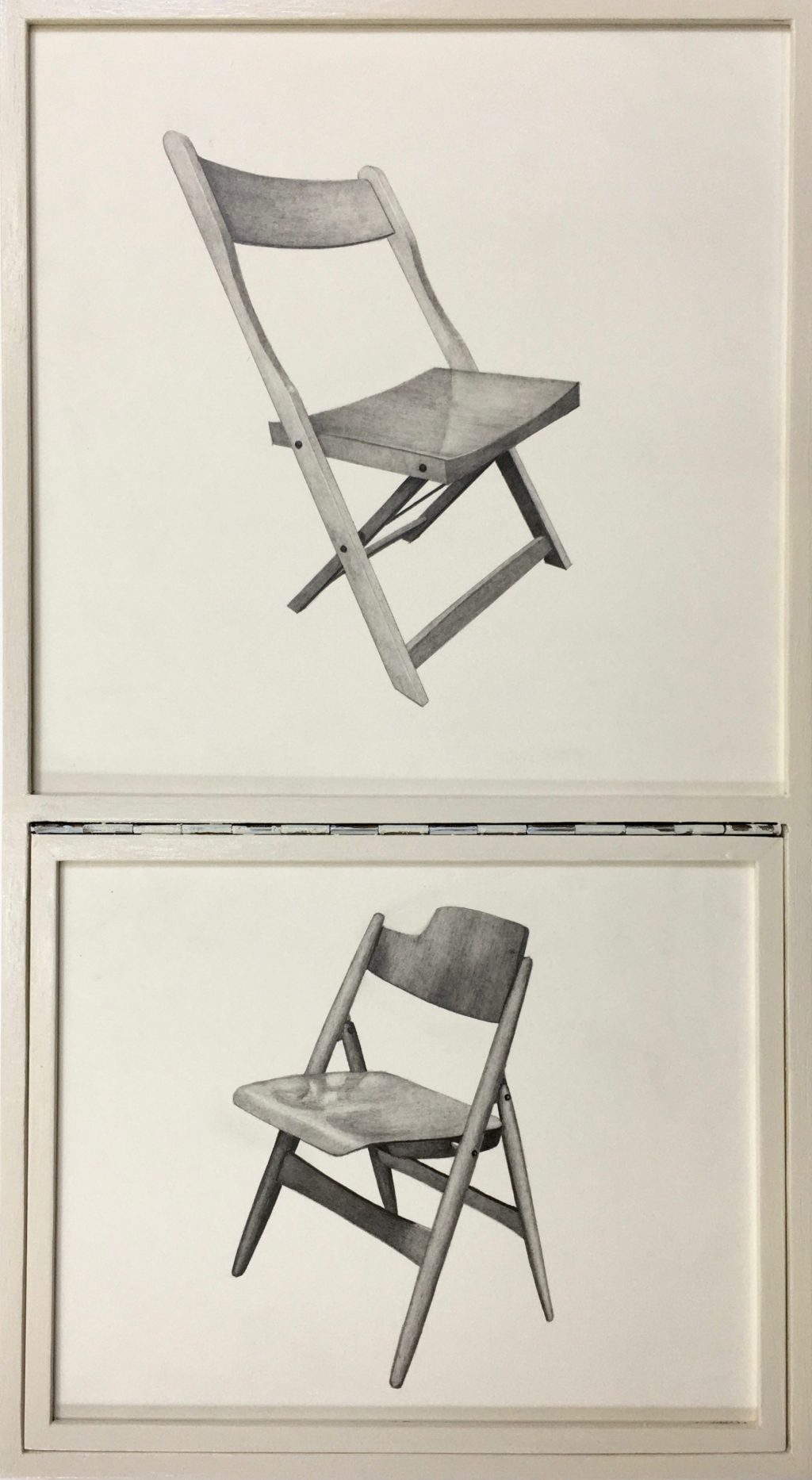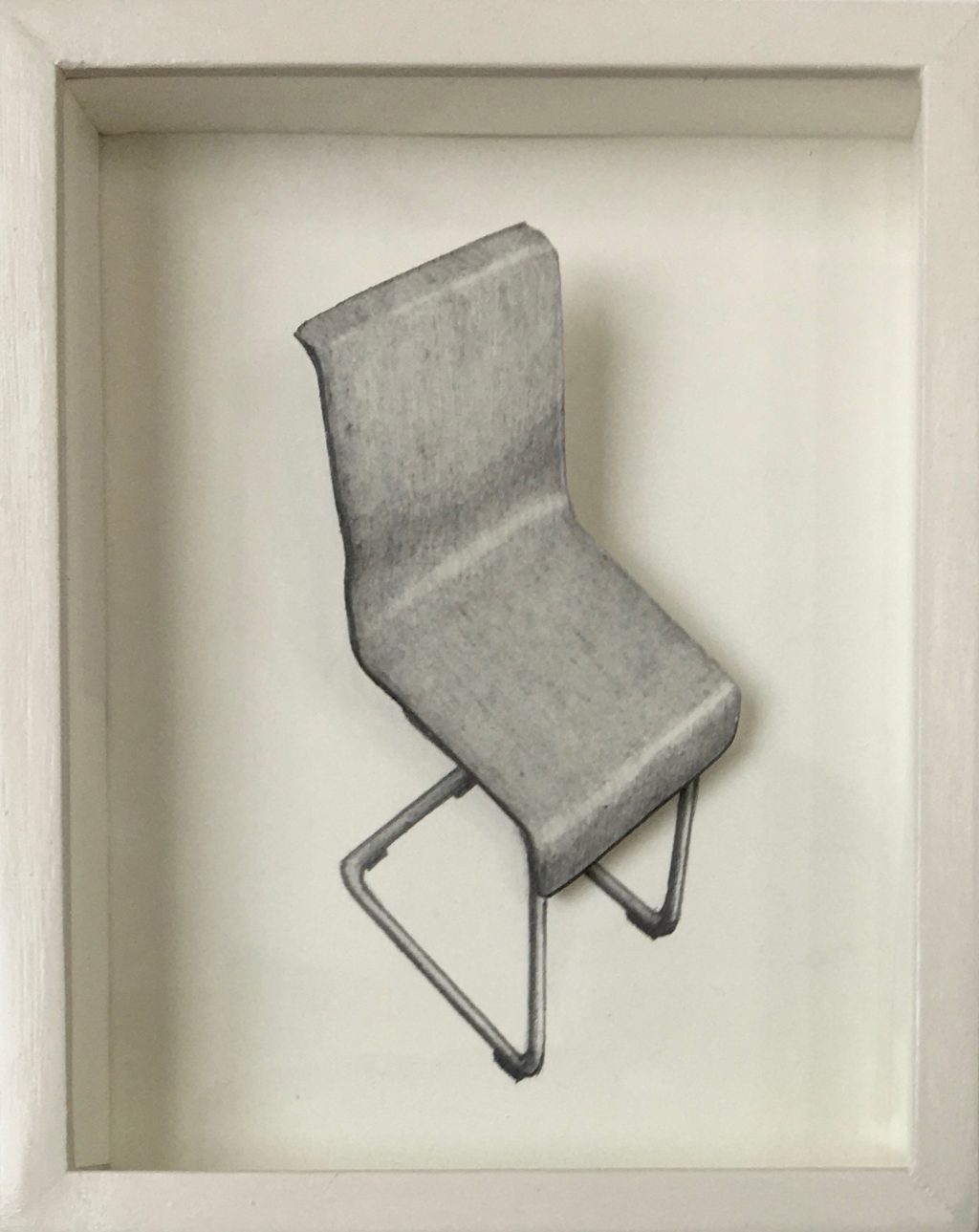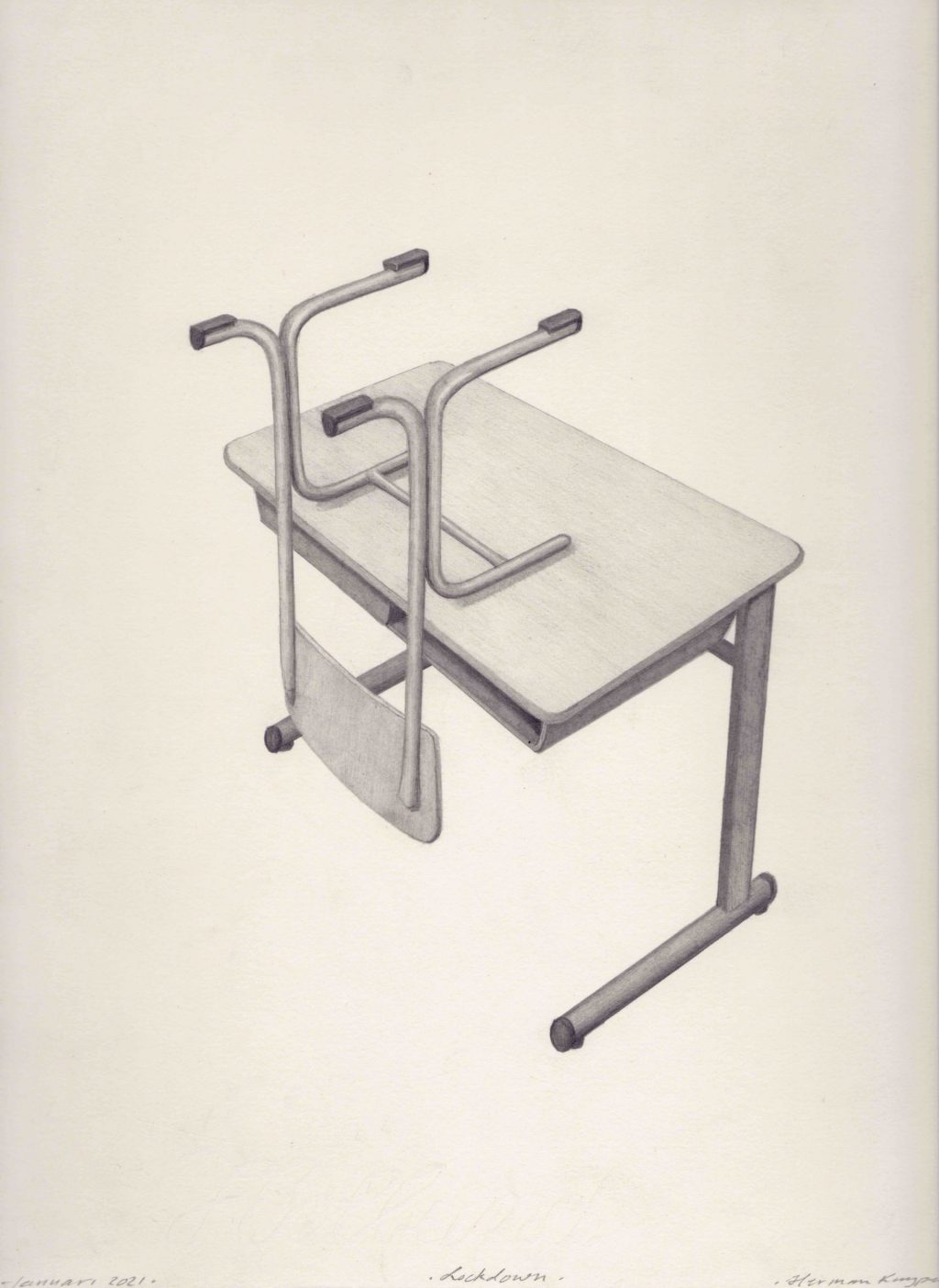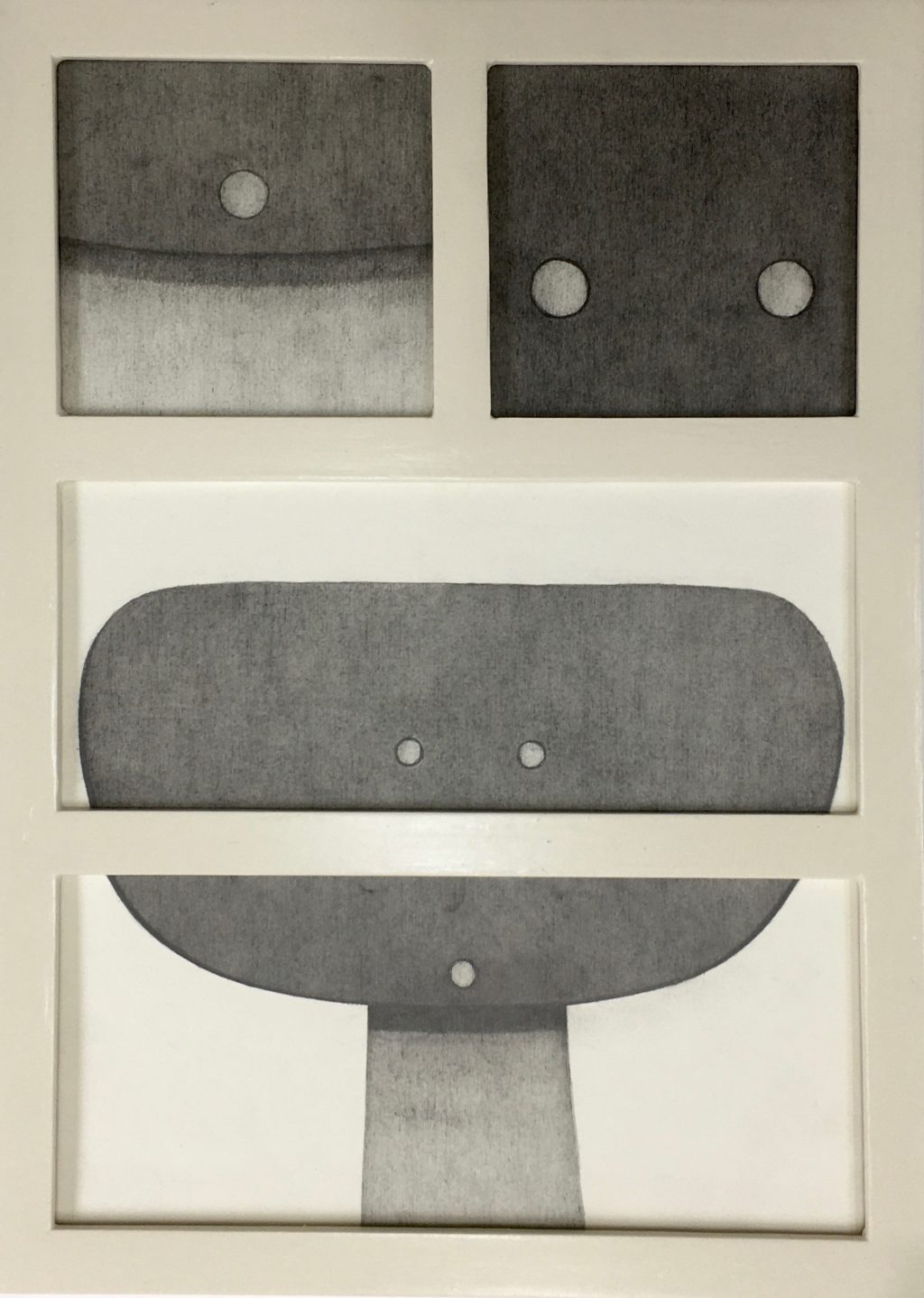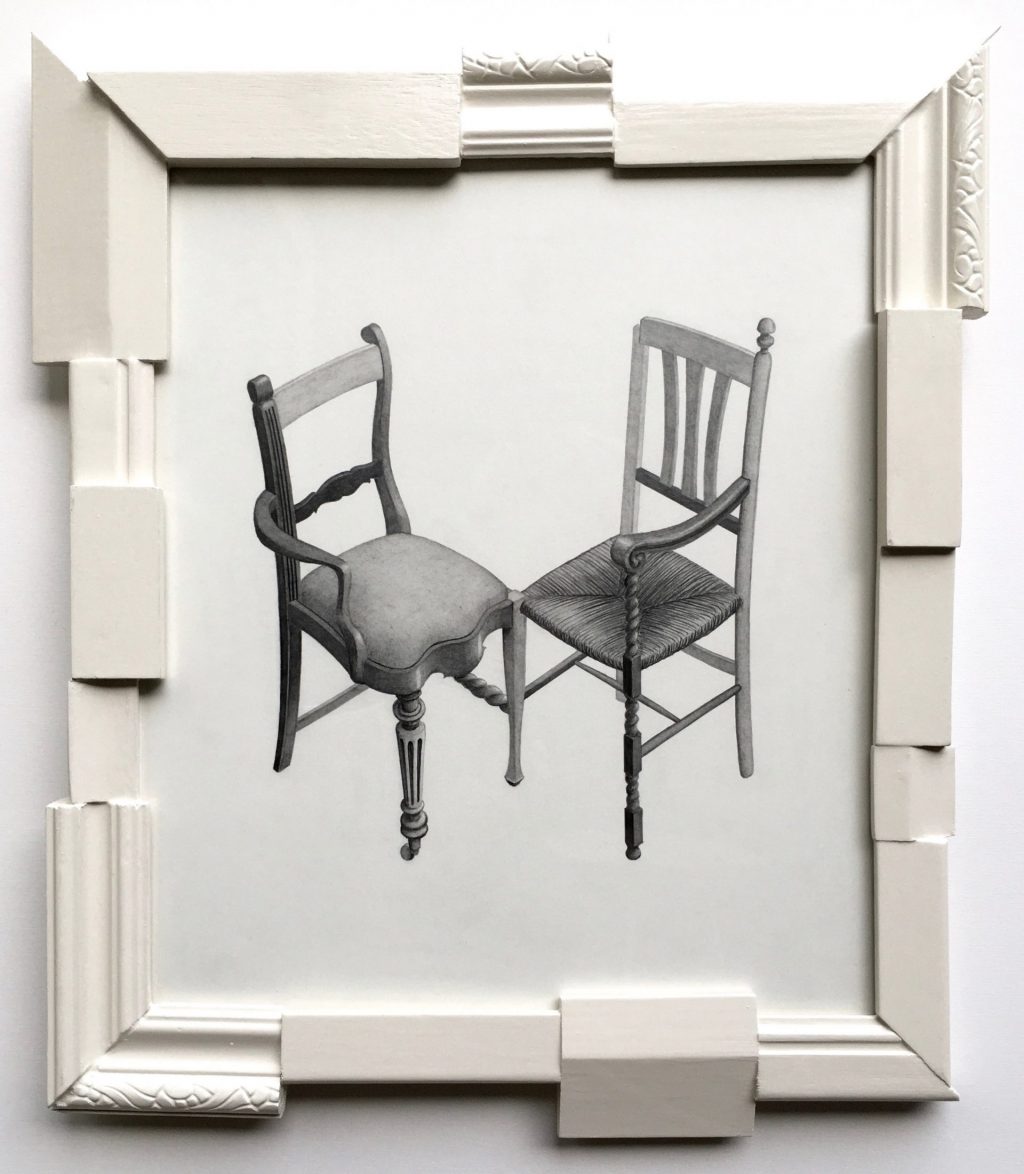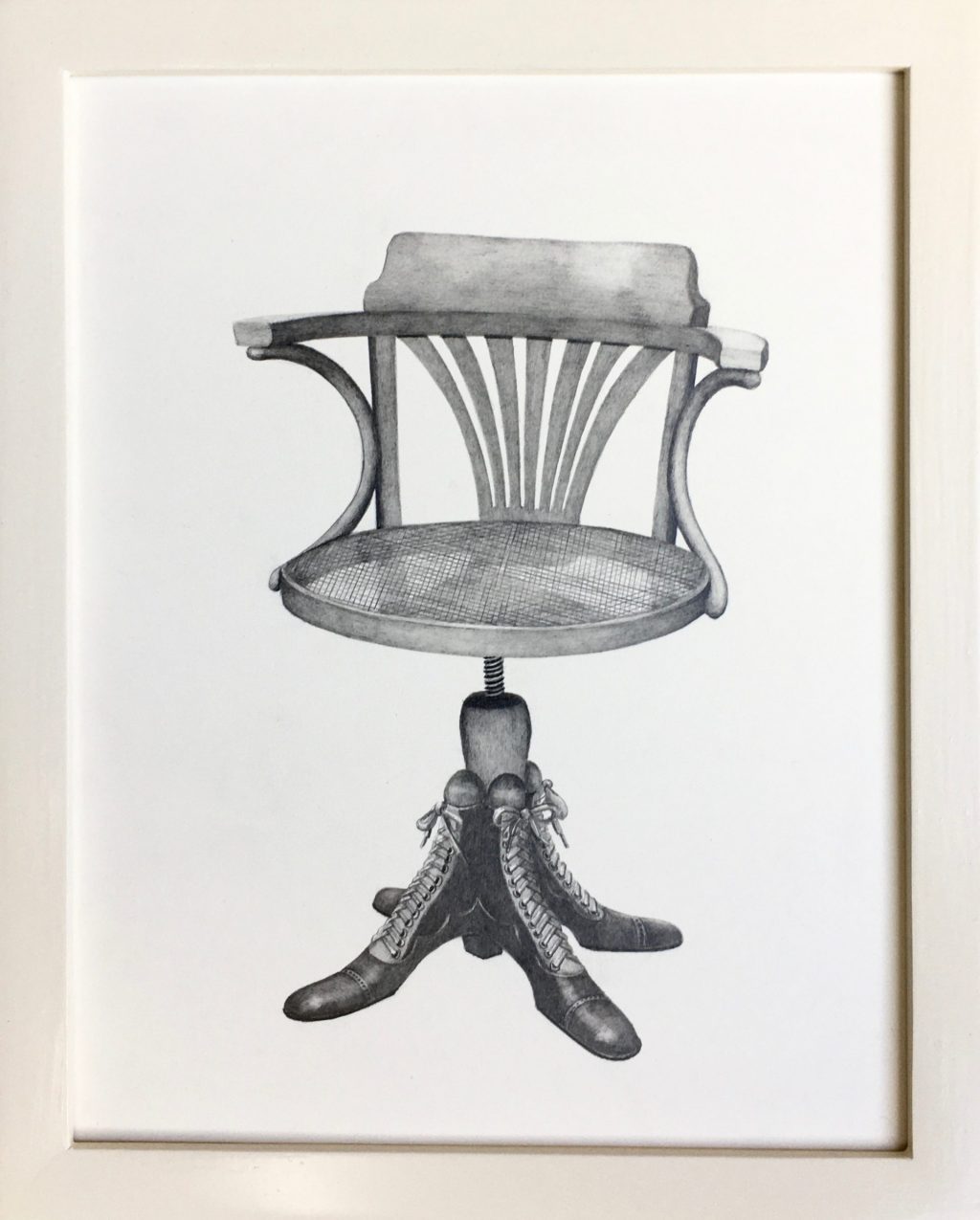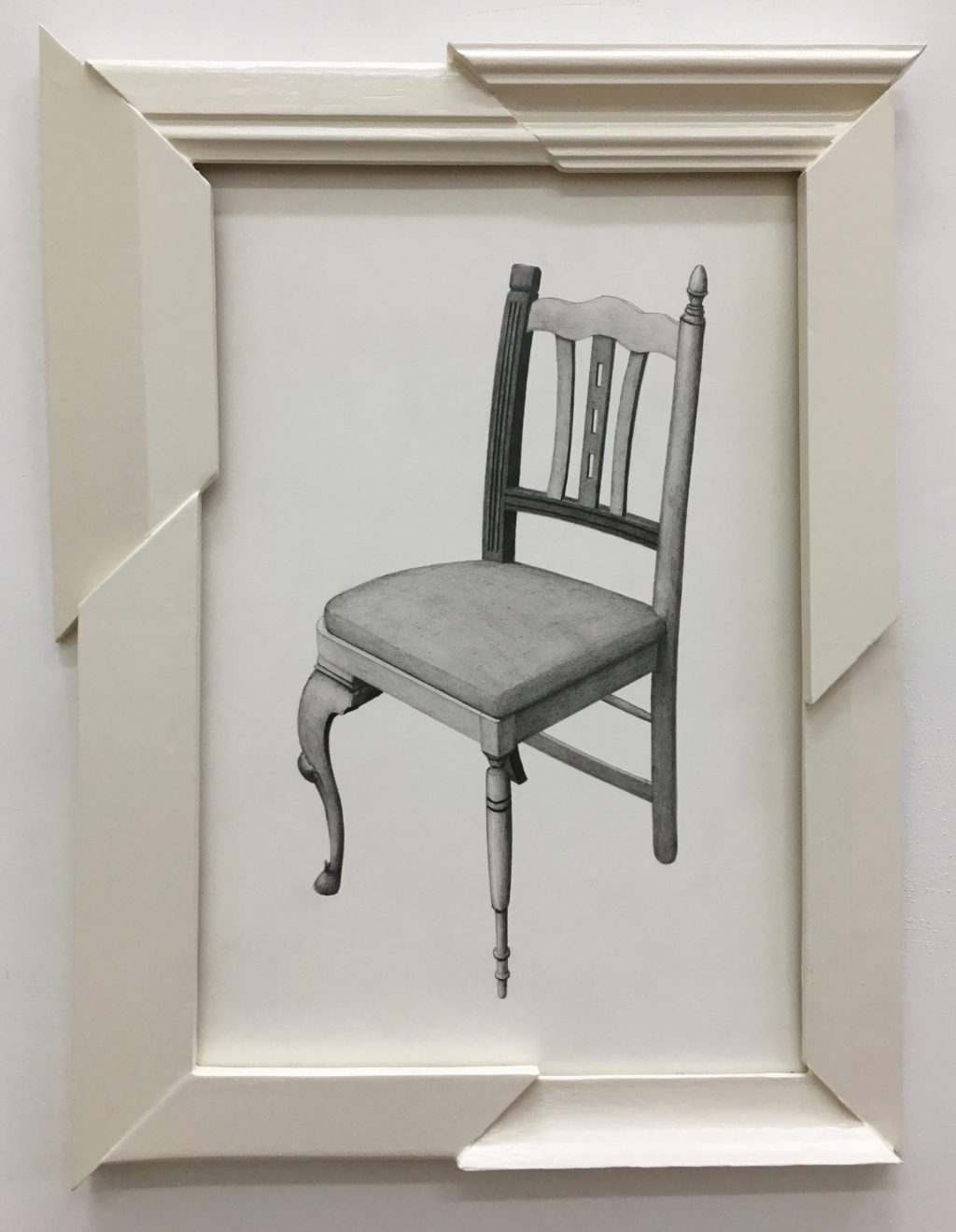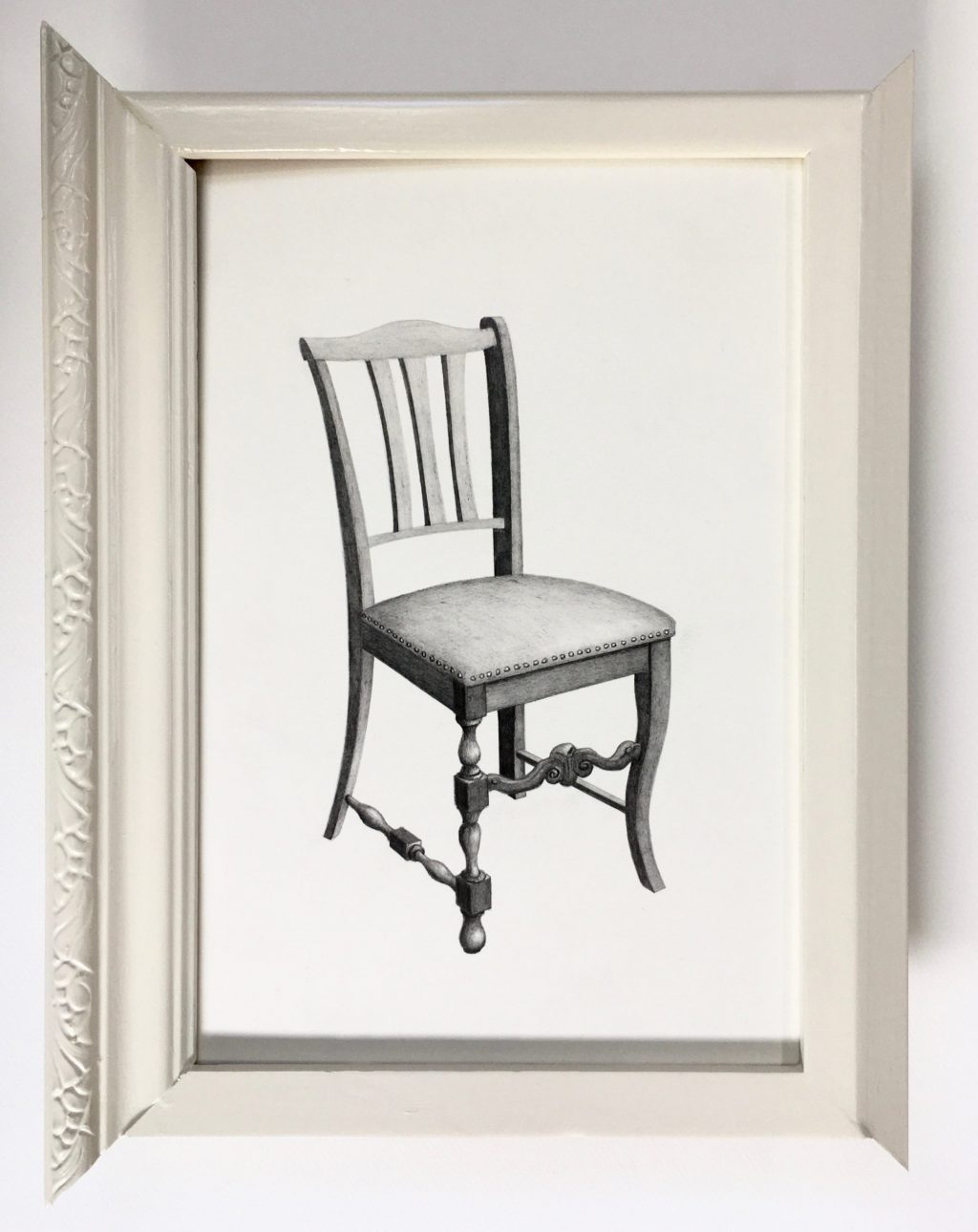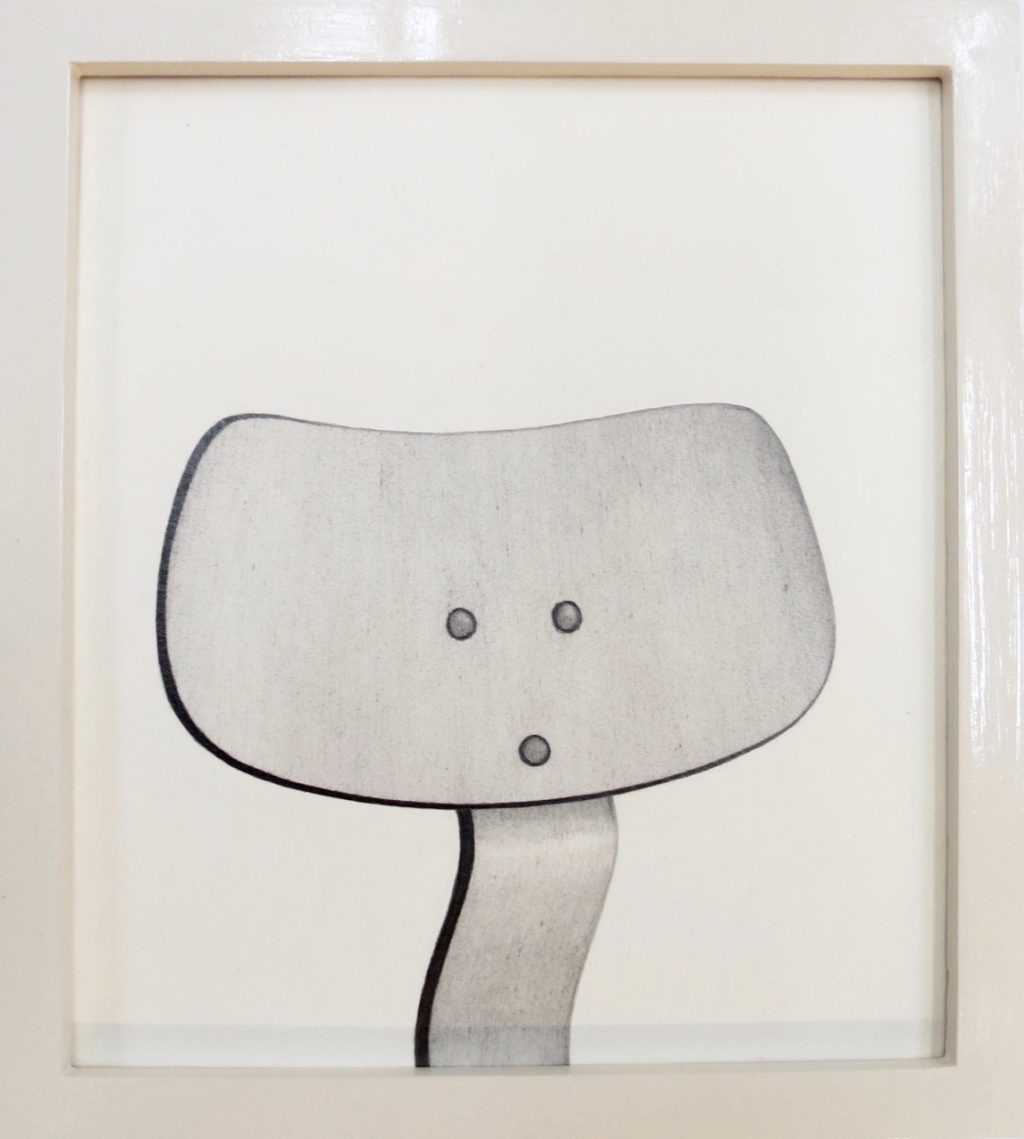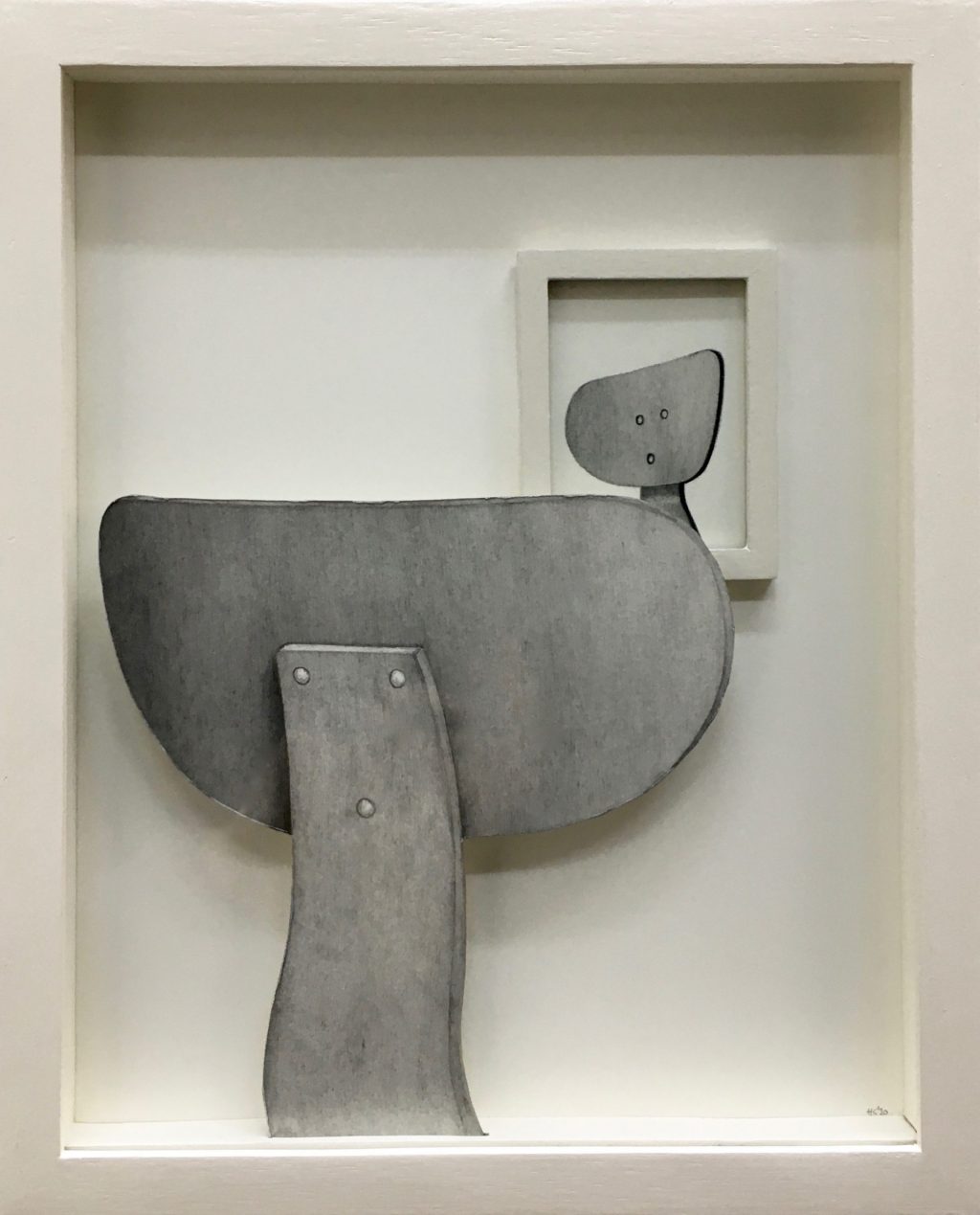Drawings
Exit II
What if the depicted subject no longer settles for living in two dimensions? Is this the exit leading to relief?
See also related works Exit I, III, IV, Escher in Oirschot II and Stairway to heaven.
Exit I
“I have received your work in good order. How nice of you to send a book with it.
I found you because I googled ‘Oirschotse chair’. I grew up in Oirschot and have always continued to come there until my father recently passed away. I looked for a memento of my beautiful old village, but there is little to be found and what you come across is very old-fashioned. This work of yours immediately appealed to me, especially because there is humor in it, because that suits my father. I am very happy with it, it will have a nice place in my living room.”
(according to the buyer of this work)
See also the related works Exit II, III, IV, Escher in Oirschot II and Stairway to Heaven.
Escher in Oirschot III
The impact of Escher’s visit to Oirschot, first recorded by me in 1989 (Escher in Oirschot) is much greater than I dared to dream in the previous millennium. In fact, there were no dreams at all in this regard. The follow up also took quite a while. Last year I made Escher in Oirschot II: a connection between two frames by means of the bars of the backrest. In this way, the work also somewhat annexes the environment in which it hangs. In this work even the third dimension is entered.
Mirror me
The ‘overshoulder‘ frequently used in film and comics has the disadvantage that you cannot see this figure (shape) in question. In a film or comic you solve this by using multiple images, before and/or after, but if you only have one? Then a mirror is of course an option. An additional advantage is that as a viewer you also become (partly) part of the work.
Droste-effect III
The repetition of the image in the image is named after the storage tin of the Dutch chocolate manufacturer Droste. I already referred to this in my work Droste effect. In this case, I add another layer spatially by letting the framed drawing repeat itself. Shadow effect thus becomes an essential part of the image.
Three folding chairs
After Escher in Oirschot II and Stairway to heaven, the next step. The drawing, in this case a diptych, takes up part of your space with your cooperation and shows at that moment why it is called ‘three’ folding chairs, while clearly only two are depicted …
However, this relocation frees up the space on the wall again.
Levitation
In some earlier works, such as the watercolor Rietveld or the pencil drawing Swing II and more recently Relations, I make use of several layers in the image, just as in this one. This makes the light, or rather one of the consequences of light, namely shadow, an important element that determines the drawing and makes it more dynamic in a sense. The drawn chair separates itself from the drawing, as it were.
Stairway to heaven
Renowned Scottish architect Charles Rennie Macintosh designed buildings down to the finest detail and often went as far as just about the entire interior. That is why he also has quite a few chairs to his name. He is known for his Ladderback chair, limited to the latter. In the spirit of my earlier work ‘Escher in Oirschot II’, I chose this design for this ‘Stairway to heaven’ because of his ladder back.
Separated and at the same time undivided.
Lockdown
At the end of the day, chair upside down on your table as a final chord. That leaves plenty of room for the sweeping team.
It looks like a seemingly familiar situation, but it soon turns out to be a special intergrowth with mainly adverse effects for the users. Moreover, as a result of this unification, the drawers can no longer be opened and thus the knowledge and materials stored in it are unaccessible: a Lockdown.
Naturally, the drawing refers to the countless classrooms that were inaccessible to millions of children worldwide during the corona crisis.
Stripping Braakman
Welcome to the world of the SB01 designed by Cees Braakman and produced by the Dutch company Pastoe. This could just be the first page of this story that you as a viewer can complete. For now it is the first page. It is already framed to be hung on the wall in stead of placing it on a bookshelf between other books.
Mixed up III
Suppose you have trouble throwing things away. Who knows, every leftover can ever be used for something else. However, practice has also shown that many of those leftovers turn out to be just too small, thick, wrong in color, atmosphere or width and thus remain where they lie and slowly disappear from view, and end up in obscurity. A rigorous clean-up action usually seals the fate of these things. From a chair that I once literally slumped through, I have had some legs for years. That is how these chairs were created. As a kind of mental exercise, browsing through my chair books, I collected some parts here and there and assembled them into this two-seater.
And due to all the picture frames I have made over the years I had quite a lot small pieces of frames left… Then one and one is three isn’t it?
Happy feet
A classic office chair from the TU Delft collection dating from the beginning of the last century. The designer is unknown.
Mixed up II
Who knows, that bit, that leftover, may come in handy again. A good feature not to throw something away too quickly. I have often managed to solve something because I had ‘kept something somewhere’. The downside is that it can sometimes get out of hand and the amount of leftovers is more or less reluctant. For example, I saved some undamaged parts of a chair that I literally slumped through. Composing a new frame from leftover frame pieces requires a drawing in which the depicted chair is also composed of parts of (eight) other chairs.
Mixed up
Who knows, that bit, that leftover, may come in handy again. A good feature not to throw something away too quickly. I have often managed to solve something because I had ‘kept something somewhere’. The downside is that it can sometimes get out of hand and the amount of leftovers is more or less reluctant. For example, I saved some undamaged parts of a chair that I literally slumped through. Composing a new frame, a leftovers-frame, from preserved frame pieces requires a drawing in which the depicted chair is also composed of parts of (four) other chairs.
Cheese 0/10
This drawing ‘Cheese’, of course referring to the moment just before a photographer takes his shot for a portrait, was the reason for an assignment. Making this drawing in an edition of 10. The agreed 10 have been delivered to client Wonderwood in Amsterdam. This one, the starting point, remained. Therefore 0/10 which means there are actually eleven. Connoisseurs will of course immediately recognize Cees Braakman’s SB02.
Relations
Are we looking at a self-portrait here? Or is it a family member? From a previous generation possible? After all generation is also a form of relationship. Or is the relationship simply the front and back of this Pastoe chair designed by Cees Braakman?

